Talking about biodiversity and nature in cities? If you do this in Brazil it will probably sound weird to a lot of educated people, including professionals and researchers on urban and ecological areas. And that’s exactly what I do most of the time. Actually, it is interesting how I got to what I do now, how I learned and became engaged in urban ecological planning and design after five decades living as if natural resources and landscapes were guaranteed forever!
Just a brief look at my history: I was born after the Second World War, and it was the time of the economic growth at any cost. This means that natural resources exploitation was the driving force to get to the American style developed society that everybody desired. Almost nobody was concerned about nature and fair distribution of income among people. Actually, there was fear of the red communist expansion in Latin America. This fear grew at a point when in 1964 there was a military coup and Brazil became a dictatorship right before I turned 11 years old. My father owned a fertilizer and pesticide company that was favored by the expanding agriculture frontiers. I remember the smell of the toxic elements that were imported in huge ships and docked in the port of Santos near his warehouse. And when I went to college the “natural” thing was to study Business Administration. Also, getting married and have kids early were part of the happiness package. I did everything right. But when I was about to turn 50 years old, I decided to look for something different to do, to be outdoors. I always enjoyed being in green areas, so I went for a garden design short course with a very special person: Cecilia Beatriz Veiga Soares at the Botanic Garden of Rio de Janeiro. Then, I found out that there was a new undergrad course on landscape design with one of the best Brazilian landscape architects, the late Fernando Chacel. In his first class, he opened a map of watersheds to show how to start analyzing the landscape, to teach how to plan and design with nature. I instantly knew that a new horizon had opened for me. From then on, I have studied and researched about how we humans, living in cities, need nature in our lives.
In the last years I was lucky to meet great people all over the world, and learn with them. I write for The Nature of Cities collective blog for two years now, and have written about the expectations the World Soccer Cup, the Olympic Games and other international events created with the investments flowing to change Rio de Janeiro. Also, I had a chance to tell about the frustration with the lack of systemic planning and the focus on urban expansion that happened in the last years over flood prone and sea level rise areas, forest remnants, Conservation Units, and so on.
Well, nature is still not part of the agenda in most of the Brazilian cities. But, there is hope to change the paradigm. There are some optimistic events that might help educate professionals in landscape planning and design and urban ecology.
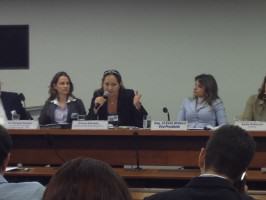
Firstly, the regulation of the landscape architecture profession is under way in the Brazilian Congress. The ANP (National Association of Landscape Designers/Architects) is working hard to push the needed legislative bureaucracy to implement regular undergrad and graduation specific courses in Brazilian universities, and legalize the landscape architecture professional independently from architecture and agronomy. The Law Project 2043/2011 has already passed the Education and Culture Commission and had a positive opinion from Representative Rapporteur of the Urban Development Commission. There are still another two commissions to go, each one takes about one year! There are barriers to overcome, but we are working hard to put landscape in the realm of urban planning and design. It is a long process, and it might take more than four years before we start to fully educate professionals in specific undergrad and graduate courses.
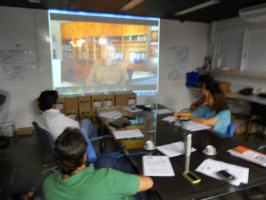
During the SURE Urban Ecology Congress last July (2013) in Berlin, I proposed to create a Brazilian Chapter of the Society for Urban Ecology — SURE-BR. This is another important step to put forward the role of biodiversity and ecosystem services in cities. We have already implemented a few actions, and some results are quite surprising. In the beginning of 2013 we launched the Ecologia Urbana Facebook group that today counts with almost 600 members. After the congress we launched a survey to find out who was interested in Urban Ecology, 460 people responded to it until now. The SURE-BR already has a multidisciplinary Executive Committee with researchers from several universities that participated in the founding workshop in February. It is a hard task with little time and no funds yet. SURE-BR already has a tentative Statute that is under legal revision.
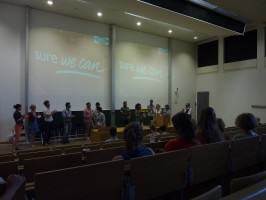
In Brazil everything is really complicated, costs a lot of money and takes a long time, so we can only go further if we have volunteer’s contributions. We are planning a Latin American Urban Ecology Congress in late 2015. The event shall take place at Pontifícia Universidade Católica do Rio de Janeiro — PUC-RIO. Since 2011 Pierre-André Martin and I have offered short courses on Green Infrastructure and Urban Ecology. Now SURE-BR is also supporting this course, and we have been invited to give it in other cities.
|
Architecture and Urbanism |
123 |
23% |
|
Landscape Design |
33 |
6% |
|
Biological Sciences |
167 |
32% |
|
Earth Sciences |
40 |
8% |
|
Social Sciences |
15 |
3% |
|
Engineering |
36 |
7% |
|
Law |
8 |
2% |
|
Other |
107 |
20% |
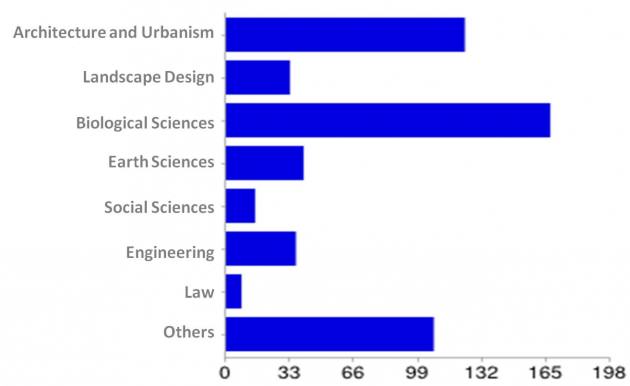
The constitution of the IBP — Instituto Brasileiro de Paisagem (Brazilian Institute of Landscape) is another possible driver to help shift to a paradigm where landscape and biodiversity in cities enter the mainstream in planning and designing urban environments. The IBP was conceived last March during the international seminar “Paisagismo(s) no Brasil”, when Martha Fajardo was an international speaker, and in her presentation she proposed the creation of the Brazilian Institute of Landscape inspired by the British Landscape Institute. Immediately all other participants and the audience were stimulated by this idea, and we came out with an oficial document to materialize the IBP. We are now working on two fronts, one is the Statute and the other is to develop the curriculum guidelines.
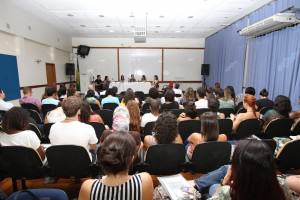
There is an evergrowing movement to green Brazilian cities with several actors interested in building livable and healthier urban environments. In May, the ATVerde Brasil (Brazilian Association of Green Techonologies) is organizing the 1st Forum on Green Infrastructure during a Roofing Show in São Paulo — TECOBI. INVERDE is officially supporting the event that will gather Latin American researchers and companies that are investing in greening our buildings and our cities. Experts on green infrastructure, roofs and walls, and related legislation are attracting a lot of people to the event.
I teach urban planning and design in interdisciplinary teams in undergrad and graduation courses. I also lecture in many universities and events. What really keeps my energy flowing is the student’s response and their interest in landscape and biodiversity related themes. I can feel how people are biophilic and want to learn more about, and do something to change their cities. I also have been trying to articulate several groups and associations. Mike Houck in his TNOC blog last April wrote about his experience in the Portland-Vancouver region, and it was very inspiring for me.
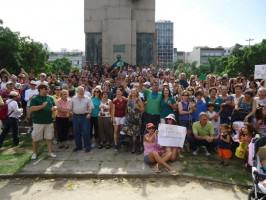
Another impetus coming from the Federal sphere is the translation to Portuguese of the 2012 “Cities and Biodiversity Outlook” led by Thomas Elmqvist. It will be released in the Biodiversity Day on May 22nd.
As part of the Tim Beatley’s Biophilic Cities Project, I am organizing together with Maria Fernanda Lemos — director of the architecture and urbanism course of Pontifícia Universidade Católica do Rio de Janeiro (PUC-RIO), and INVERDE Institute the Conference “Biophilic Cities 2” in Rio de Janeiro. The event will probably happen in March 2015, and the objective is to put together cities’ representatives of the Biophilic Cities Project in a seminar, followed by a field trip and a workshop to plan a Biophilic Rio. We intend for the event to be open for students, practitioners, researchers, public officials and the general public. Tim Beatley has been very supportive and enthusiastic about this idea that was born in the first workshop last September at the Biophilic Cities Launch in Charlottesville by Nick Grayson from Birmingham — which, by the way, is the first official Biophilic City.
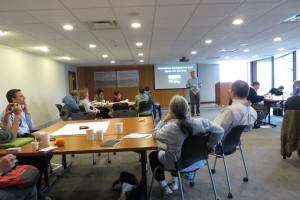
There is a great opportunity to change the course of our urban development. But, we urgently need prepared practitioners and scientists with a broad understanding of the social, ecological and technological aspects involved in urban landscapes to plan and design resilient and sustainable cities. We also need real participatory governance now, and leaders that have the power to bring together so many people, institutions and associations that are in one way or another trying to protect or increase green areas that offer irreplaceable ecosystem services to people living in cities.
It is a huge challenge to overcome cultural, educational, economic and political barriers. I am one of the many individuals seeking for new ways to build livable and healthier cities. On one hand I feel quite frustrated with the outcome of the huge investments that are flowing to my city, Rio de Janeiro, that are going in the opposite direction: graying a once greener city. On the other, I am happy that after only a few years after shifting my own paradigm I am collaborating to try to change the destructive urbanization pattern with the support of the institutions SURE-BR, ANP, IBP, ATVerde-Brasil. It is also very rewarding to be engaged in educational programs at PUC-Rio and UFRJ (Universidade Federal do Rio de Janeiro), and the short courses on green infrastructure and urban ecology with Pierre-André Martin that has been promoted by Inverde Institute in the last years, and in 2014 has been embraced by one of the best private universities in the country.
I strongly believe that cities can be regenerated if we educate, engage people and transform low social and ecological value landscapes (in any scale) in high performance multifunctional urban green infrastructure with and ecosystem services approach.
Cecilia Herzog
Rio de Janeiro

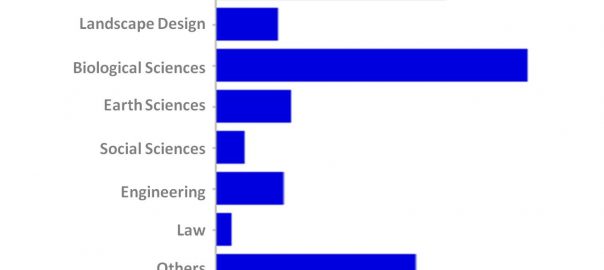






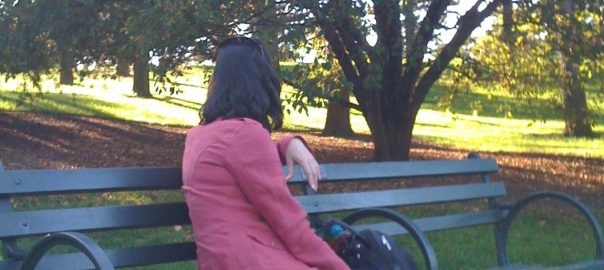
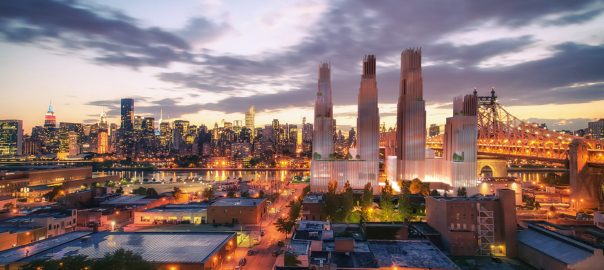
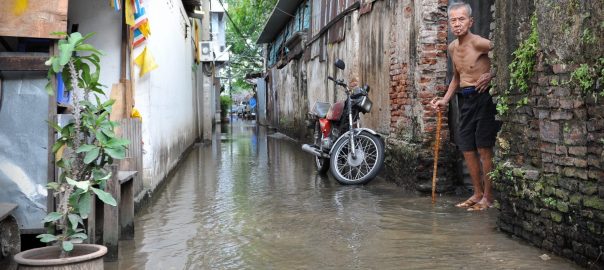
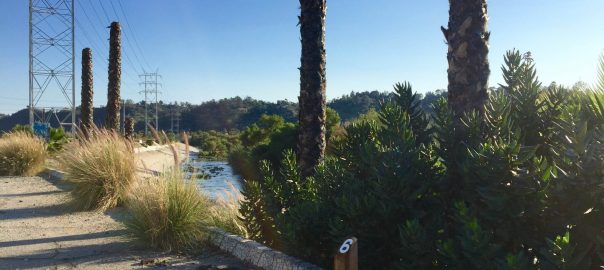
Add a Comment
Join our conversation